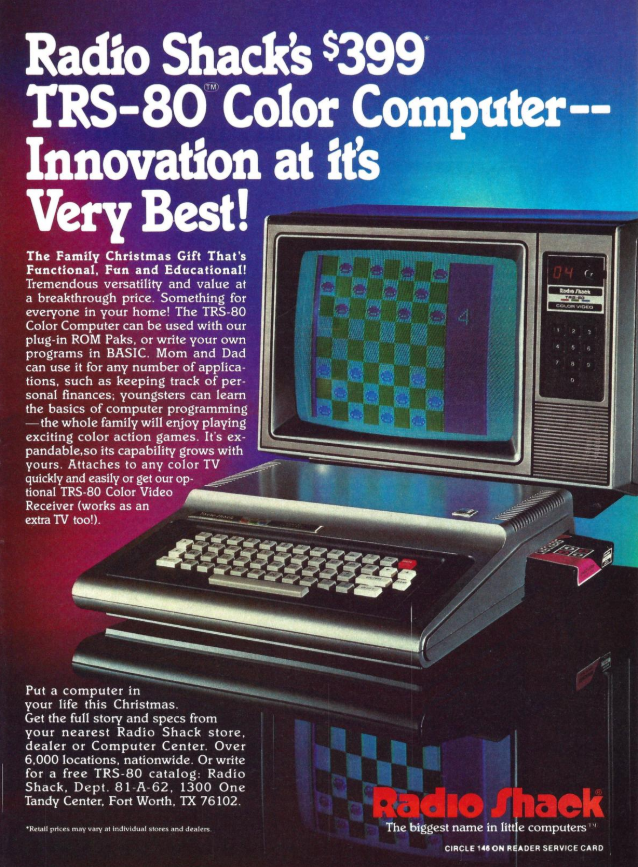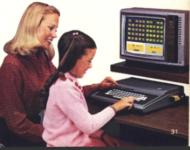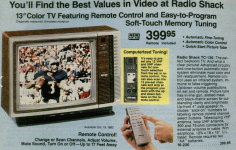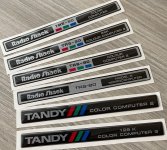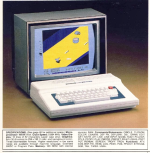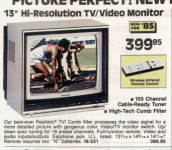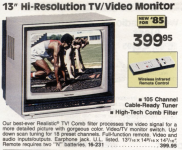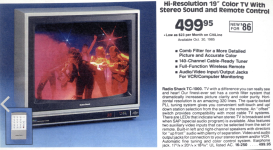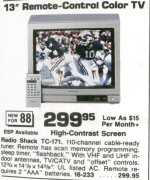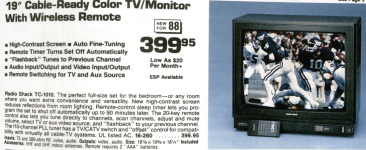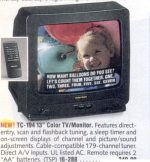This White Westinghouse is on eBay right now, item number 134345484053:
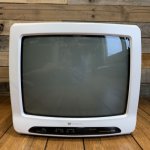
The RCA E13253KW:
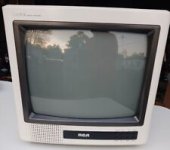
Many of the Sony CRTs with the model number "KV-13***" (the stars are placeholders for a variety of numbers and letters, such as KV-1311CR)
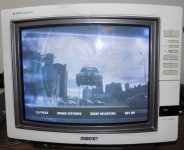
check many of the "boxes" I laid out in my previous post. White front, sometimes with a black frame inside, sometimes three color dots next to the Trinitron branding, TV tuner, and various inputs including analog RGB (Sony, being Sony, often had its own specific version of analog RGB though) and S-Video as well as composite and RF. The PVM-1390 is similar.
Of course if you fall down the PVM / BVM rabbit hole, you may never come out. Those were ultra high quality monitors meant for TV and movie studios, production houses, etc., with a vast array of input ports. They were not offered to consumers, and I think cost thousands even in the 80s, which adjusted for inflation meant eye-watering prices. Along with the implausible scenarios of getting your hands on one back in that day (auctioned off from a failed TV station perhaps) the notion of attaching a Color Computer that cost $500, and usually $200 or less later in its life, to one of these Rolls Royce level displays is rather absurd, but it could have been done. Note that many of these CRT monitors are not meant to look good sitting on a desk, with harsh metal sides, no gently tapered rear (just flat backs), because they were often stacked.
I think the some of the Magnavox RGB-80s, such as the CM-8562 are a good match, too (never mind the little apple sticker the owner stuck on).
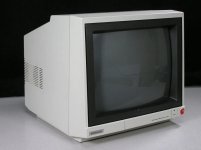
In fact the one above is currently being offered by Apple Rescue of Denver as an Apple monitor.
Now if your CoCo is Tandy branded, then it's pretty easy: just get the Tandy CM-8 that was made for the Color Computer 3. Or maybe the CM-2 which was meant for the Tandy TRS-80 2000, a device whose branding was in transition between Radio Shack TRS-80 on the one hand, and Tandy on the other; but the CM-2 was not made for any CoCo so you probably really need to know what you're doing to get the two to work together.
But when you start getting into computer monitors, keep in mind that if the display lacks a TV tuner (as most devices sold purely as monitors do) then the majority of CoCo games, especially third-party games, may look black-and-white since they took advantage of a quirk in that era's color TVs (those using the NTSC standard used in North America, Japan, South Korea, Taiwan, much of Latin America, etc) which would render tiny black-and-white dots as either blue or orange-red. In this way, CoCo programmers would keep their cake and eat it too - get the maximum possible graphic resolution, but not be stuck with black-and-white but rather add blue and red to that palette. So again if you're using a pure monitor with no TV capability, and if your CoCo video mod doesn't "translate" artifact color images into colors, I think you'll need an external analog NTSC TV tuner or external analog capable RF Modulator to turn that signal into a color one. I don't know for sure if that would work though. Does anyone else know?
Finally, there are a whole slew of 1990s CRT TVs from Magnavox, Sharp, Sony, Panasonic and others that have a white case (with no black interior frame), accept composite or even S-video in (as well as RF / antenna in of course).

